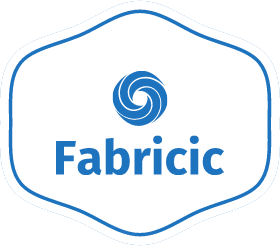From the Renaissance masters to contemporary artists, tempera paint has left its indelible mark on the world of art. Its unique properties and historical significance continue to intrigue creators. However, not all artists embrace this ancient medium with open arms. In this article, we delve into the reasons behind the love-hate relationship that many artists have with tempera paint.
Do professional artists use tempera paint?
Yes, some professional artists use tempera paint. Though often associated with school projects, tempera offers a smooth matte finish and vibrant colors that attract certain artists.
However, many professionals prefer more durable paints like acrylic or oil for long-lasting artwork. Tempera’s blending challenges and vulnerability to moisture can also influence artists’ choices.
While not as widely used as other mediums, tempera paint remains a unique option for artists seeking specific effects or historical techniques in their artwork.
Is tempera long lasting?
Tempera paint may not be as long-lasting as other paints like acrylic or oil. Over time, it can become brittle and prone to cracking or chipping. Proper care and protection can help preserve tempera artworks, but they may not withstand the test of time as well as more durable painting mediums.
Can you use Tempera paint on the fabric?
Why Do Many Artists Hate Tempera Paint?
Limited Durability and Longevity:
One of the primary concerns that some artists harbor toward tempera paint lies in its limited durability. Over time, the water-based nature of tempera may cause it to become brittle, leading to cracks or chips in the artwork. As artists invest time and passion into their creations, the risk of diminished longevity can be disheartening.
Difficult Blending and Texturing:
Unlike its versatile counterparts, such as acrylic or oil paints, tempera can present challenges in blending and creating intricate textures. Artists often struggle to achieve seamless transitions between colors, hindering their ability to bring depth and dimension to their works. The inability to achieve impasto effects further adds to the discontent of some creators.
Vulnerability to Moisture:
Water solubility is a defining trait of tempera paint, but it also becomes a double-edged sword. Artworks crafted with tempera are more susceptible to damage in high-humidity environments or when exposed to moisture. The prospect of artworks losing their luster or integrity in unpredictable surroundings can dissuade artists from utilizing this medium.
Limited Surface Compatibility:
While tempera works beautifully on certain surfaces, such as paper and wood, it may not adhere as effectively to canvas or textured surfaces. This limited surface compatibility restricts artists’ creative possibilities and may lead them to opt for more adaptable painting mediums.
Lack of Versatility and Flexibility:
The permanent finish of tempera paint means artists cannot rework or manipulate their art once it dries. For artists who thrive on spontaneity and exploration, this lack of flexibility can be stifling, prompting them to explore other mediums that offer more artistic freedom.
Historical and Cultural Factors:
The reverence towards historical or cultural traditions surrounding tempera paint influences some artists’ perception of the medium. While tempera has a rich artistic heritage, modern artists might seek more contemporary and versatile materials to express their visions.
Environmental Concerns:
The traditional use of egg yolk as a binder in tempera paint raises environmental concerns for some artists. In a world increasingly aware of eco-friendly practices, these artists may opt for paints with sustainable alternatives.
Availability and Market Demand:
The growing popularity of acrylic and oil paints has led to a broader range of colors, textures, and mediums available for artists. In contrast, the options for tempera paint remain relatively limited, impacting artists’ choices and preferences.
Preference for Contemporary Mediums:
The digital age has ushered in a preference for contemporary mediums and mixed-media art, which may divert artists from traditional tempera paint in favor of more diverse and innovative approaches.
What are the disadvantages of tempera paint?
Tempera paint, with its rich historical heritage, has found a place in the hearts of many artists. However, it’s essential to acknowledge the disadvantages that come with this water-based medium.
- Limited Durability and Longevity: Tempera paint can become brittle and prone to cracking or chipping over time, impacting the longevity of artworks.
- Difficult Blending and Texturing: Achieving smooth blends and intricate textures can be challenging with tempera, limiting artists’ creative possibilities.
- Vulnerability to Moisture: The water-soluble nature of tempera paint makes it susceptible to damage in high-humidity environments or when exposed to moisture.
- Limited Surface Compatibility: Tempera may not adhere as effectively to certain surfaces, such as canvas, hindering its versatility in the artwork.
While tempera paint offers unique qualities, its disadvantages, including limited durability, blending challenges, moisture sensitivity, and surface compatibility issues, may influence artists’ preferences.
Conclusion:
As with any artistic choice, the preference for or against tempera paint varies among artists. While some revel in its unique qualities, others find its limitations dissuading. By understanding the love-hate relationship that artists have with tempera paint, we gain insight into the diverse world of artistic expression. Ultimately, the true essence of art lies in the exploration and discovery of mediums that resonate with an artist’s individual vision and creativity.
